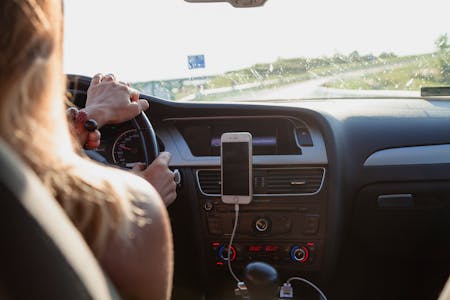

Foreseeability is a crucial concept in personal injury law, helping to determine whether a defendant could have anticipated the potential harm their actions might cause.
This concept is used to establish whether someone should be held liable for injuries that occurred due to their negligence.
Understanding this concept is key to figuring out if someone is legally responsible for another person’s injuries.
Stats About Personal Injury Cases in the US
| Category | Statistic | Details |
|---|---|---|
| Total Annual Claims | 400,000+ | Personal injury claims filed annually in the U.S. |
| Average Settlement | $52,900 | Typical settlement amount for personal injury cases. |
| Motor Vehicle Accidents | 52% | Percentage of personal injury claims due to car accidents. |
| Top Causes | N/A | Car accidents, medical malpractice, slip-and-fall incidents. |
| Litigation Time | Months to Years | Time it typically takes to resolve a personal injury case. |
| Medical Costs | $34 Billion | Annual costs associated with personal injuries in the U.S. |
Understanding Foreseeability in Personal Injury Cases
Foreseeability is often described as the predictability of an event.
If an event, such as an accident, could have been reasonably anticipated by someone acting in a similar situation, then that event is considered foreseeable.
For example, if a driver is speeding through a school zone and hits a pedestrian, the resulting injury would likely be deemed foreseeable.
The driver could have anticipated that driving recklessly in an area with children and pedestrians might lead to harm.
How Foreseeability Is Applied In Personal Injury Law
In personal injury law, foreseeability is applied to establish whether the defendant owed a duty of care to the plaintiff.
This means that the defendant should have reasonably foreseen that their actions—or lack of actions—could lead to harm.
For instance, a business owner who fails to fix a broken step that has been reported several times could be held liable for injuries because it was foreseeable that someone might trip and fall.
Differences Between Foreseeability And Proximate Cause
While foreseeability and proximate cause are related, they are not the same.
Foreseeability asks whether the defendant could have predicted the potential outcome of their actions.
Proximate cause, on the other hand, is about the direct link between the defendant’s action and the injury.
For example, if someone throws a ball into a crowd, it’s foreseeable that someone could get hit and injured.
Proximate cause would address whether that specific injury was a direct result of the thrown ball.
Importance Of Foreseeability In Establishing Negligence
Foreseeability is a critical factor in establishing negligence.
If the harm was foreseeable, it means that the defendant could have taken steps to prevent it. This makes it easier to prove that they breached their duty of care.
For example, a construction site manager who doesn’t put up warning signs around a dangerous area could be found negligent if someone is injured, as the risk was foreseeable.
Foreseeability As A Standard For Reasonable Behavior
Foreseeability acts as a benchmark for what a reasonable person would do in a given situation.
It’s about assessing whether the average person, in the same circumstances, would have predicted the risk of harm and taken steps to prevent it.
If the answer is yes, then the defendant may be found liable for not acting reasonably.
Impact Of Foreseeability On The Outcome Of Personal Injury Cases
Foreseeability can significantly impact the outcome of personal injury cases.
If it can be shown that the harm was foreseeable, the defendant is more likely to be held liable.
For example, if a driver who was texting causes an accident, the foreseeability of harm due to distracted driving can strongly influence the case outcome.
The Role of Foreseeability in Determining Liability
Foreseeability plays a fundamental role in determining liability in personal injury cases.
It helps courts decide whether a defendant should be held accountable for the injuries suffered by the plaintiff.
Essentially, it answers the question: Could the defendant have reasonably predicted that their actions might cause harm?
Foreseeability and Negligence
Foreseeability is a key element in establishing negligence.
For a defendant to be found negligent, it must be shown that they could have reasonably foreseen that their actions, or lack of action, would lead to harm.
This concept is rooted in the idea that everyone has a duty to act with reasonable care to avoid causing injury to others.
If a person’s actions are deemed to be careless and it was foreseeable that those actions could cause harm, they may be held liable for negligence.
Criteria for Determining Whether an Injury Was Foreseeable
Determining whether an injury was foreseeable is a key factor in many personal injury cases. It involves evaluating the circumstances leading up to the injury to decide if a reasonable person could have predicted that their actions might result in harm.
Here are the main criteria used to determine if an injury was foreseeable:
- Prior Incidents
- Obvious Risks
- Nature of the Activity
- Presence of Warning Signs
- Knowledge of Defendant
- Industry Standards
- Common Sense
- Vulnerability of the Victim
- Time of Day or Location
- Preventative Measures Taken
Legal Tests for Foreseeability
Various legal tests are used to determine foreseeability in personal injury cases.
One common test is the “reasonable person” standard, which asks whether a typical person in the same situation would have anticipated the risk.
Another is the “zone of danger” test, which looks at whether the injured party was in the immediate area of potential harm. These tests help courts decide if the harm was something that should have been anticipated.
Role of Foreseeability in Proving Breach of Duty
Once it has been established that harm was foreseeable, the next step is to prove that the defendant breached their duty of care.
A breach occurs when the defendant fails to act as a reasonable person would under similar circumstances.
Proving a breach of duty is crucial in personal injury cases, as it connects the concept of foreseeability with the defendant’s responsibility to prevent harm.
Proximate Cause and Foreseeability
Proximate cause and foreseeability are critical concepts in personal injury law, but they serve different roles.
Foreseeability addresses whether a defendant could have predicted the potential harm, while proximate cause focuses on the direct connection between the defendant’s actions and the injury.
Together, they help determine whether a defendant should be held liable for an injury.
Defining Proximate Cause and Its Connection to Foreseeability
Proximate cause refers to the primary cause of an injury, asking whether the harm was a direct result of the defendant’s actions.
For liability to be established, the injury must be a foreseeable outcome of the defendant’s conduct.
If the harm is too remote or unexpected, proximate cause may not be established.
For example, if a driver speeds through a red light and causes an accident, the resulting injuries would be a foreseeable consequence of the reckless driving.
How Proximate Cause Limits Liability Based on Foreseeability
Proximate cause ensures defendants are only held liable for foreseeable and directly connected injuries. Here’s how it limits liability:
- But-For Test: If the injury wouldn’t have happened without the defendant’s actions, liability may be established.
- Substantial Factor: The defendant’s actions must significantly contribute to the harm.
- Foreseeability: The injury must be a predictable outcome of the defendant’s actions.
- Zone of Danger: The injured party must be within the immediate risk area created by the defendant.
- Directness: A clear and direct link between the actions and injury is needed.
- Intervening Causes: Unexpected events after the defendant’s actions can break the chain of causation.
- Foreseeable Plaintiff: Liability is limited to those reasonably at risk due to the defendant’s behavior.
- Remoteness: The injury must not be too remote or unrelated to the actions.
- Multiple Causes: Liability is shared based on each party’s role in the harm.
- Policy Concerns: Courts may limit liability to avoid excessive or unpredictable claims.
For legal advice on proximate cause and your case, contact Goldenzweig Law to explore your options.
Legal Principles That Govern Proximate Cause in Personal Injury Cases
Legal tests like the “but-for” test and the “substantial factor” test help determine proximate cause.
The “but-for” test asks whether the injury would have occurred but for the defendant’s actions.
The “substantial factor” test considers whether the defendant’s conduct significantly contributed to the harm.
These principles guide courts in determining the direct link between the defendant’s actions and the injury.
The Role of Intervening Events in Breaking the Chain of Causation
Intervening events, or superseding causes, can break the chain of causation, relieving the defendant of liability.
These events occur after the defendant’s initial act and lead to harm in a way that was not foreseeable.
For example, if someone leaves a ladder in the driveway and a speeding car hits it, the speeding could be considered an intervening event, shifting liability away from the person who left the ladder.
Differences Between Direct Causation and Foreseeable Consequences
Direct causation refers to the immediate cause of an injury, while foreseeable consequences are those that could reasonably be expected to occur.
An action may be a direct cause without being foreseeable, and vice versa.
For instance, if a construction worker drops a tool and it injures someone below, the direct cause is the falling tool.
However, if the area below was supposed to be clear, the injury might not have been foreseeable.
Speak to a Personal Injury Attorney
If you or a loved one has been injured and you believe it could have been prevented, contact Goldenzweig Law for guidance.
As a Houston personal injury attorney, they can help you understand your legal rights and pursue the compensation you deserve.
Call 713-903-3988 today to discuss your case.
Navigation
Related Posts


What is a Non Dot Recordable Accident?
Continue Reading

